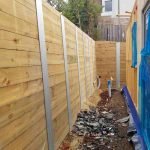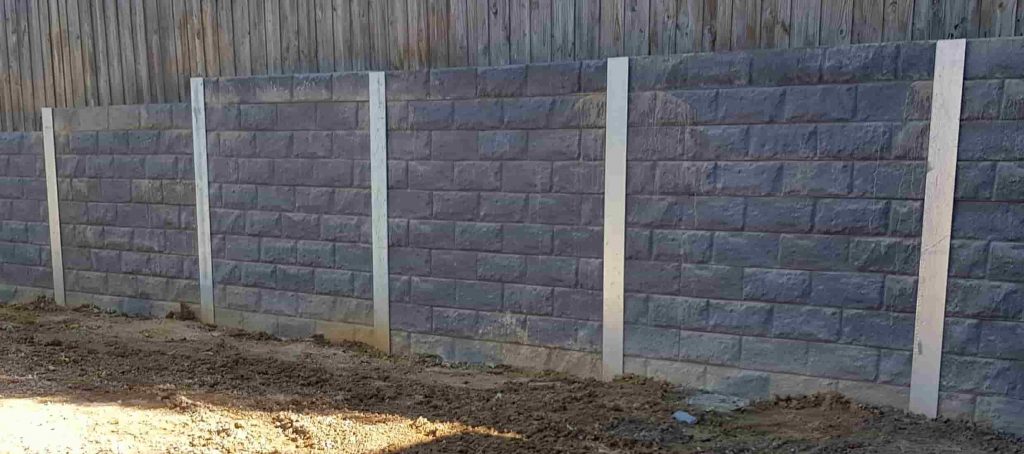Introduction
When it pertains to landscaping and building and construction, among the most critical elements to think about is the type of soil on your home. Understanding soil types with your retaining wall installer's help can make a substantial distinction in making sure the stability and longevity of your retaining wall. Retaining walls serve not just as visual improvements however likewise play an essential function in managing soil erosion and supplying support in sloped locations. This guide will dig deep into the intricacies of soil types, their attributes, and how they interact with different products like timber sleepers, concrete sleepers, and H beams
Understanding Soil Types with Your Retaining Wall Installer's Help
What Are Soil Types?
Soil types are classified based on their physical and chemical homes. They can be broadly classified into sandy, clayey, silty, loamy, and peaty soils. Each type has its own distinct characteristics that affect drain, compaction, and overall stability.
Why Is Soil Type Important for Keeping Walls?
The kind of soil straight affects the design and installation of retaining walls:
- Drainage: Some soils maintain water while others allow it to drain pipes quickly. Weight: Various soil types have varying weights that can apply pressures on the retaining wall. Erosion: The vulnerability to disintegration varies with each soil type.
Common Soil Types Explained
Sandy Soil
Sandy soil consists of big particles that create big spaces in between them. It drains quickly however may not hold nutrients well.
Pros:
- Excellent drainage Easy to work with
Cons:
- Low nutrient retention Susceptible to erosion
Clayey Soil
Clayey soil consists of very fine particles that are tightly compacted. It maintains water but drains poorly.
Pros:
- High nutrient retention Good for specific plant growth
Cons:
- Poor drainage Can expand or diminish dramatically with moisture changes
Silty Soil
Silty soil is comprised of medium-sized particles that are smooth to the touch. It holds moisture better than sandy soil however drains pipes poorly.
Pros:
- Good nutrient retention Holds moisture well
Cons:
- Compacts easily Susceptible to disintegration when wet
Loamy Soil
Loamy soil is a mix of sand, silt, and clay. It is frequently considered the perfect garden soil due to its balance of drain and nutrient retention.
Pros:
- Excellent drain Nutrient-rich
Cons:
- Can be pricey if acquired
Peaty Soil
Peaty soil contains a lot of raw material, making it dark in color. It's typically discovered in wet areas.
Pros:
- Rich in nutrients Great for particular plants
Cons:
- Poor drainage Can be acidic
Choosing the Right Product for Your Maintaining Wall
Timber Sleepers vs. Concrete Sleepers
When building a retaining wall, you have a couple of product choices - timber sleepers or concrete sleepers Each has its advantages depending upon your specific needs.
Timber Sleepers
Timber sleepers provide a natural look that blends well with gardens.
Advantages:
Aesthetic appeal. Easier to handle during installation. Cost-effective option.Disadvantages:
Prone to rot over time. May need more maintenance.Concrete Sleepers
Concrete sleepers provide sturdiness and strength for bigger walls or walls developed on unstable soil conditions.
Advantages:
Long-lasting. Requires less maintenance. Suitable for various designs.Disadvantages:
More costly than timber. Heavier, requiring more labor throughout installation.H Beams as Structural Support
For vertical loads or additional structural support in your retaining wall system, using H beams can be beneficial.
Benefits of H Beams:
Provide additional strength against lateral earth pressure. Ideal for steep slopes where additional reinforcement is necessary. Versatile usage in conjunction with both lumber or concrete systems.Soil Analysis Before Installation
Why Conduct a Soil Test?
Conducting a soil test before installing your retaining wall is crucial since it assists identify:
Soil composition (sand, silt, clay). pH levels affecting plant growth. Drainage abilities which affect wall design.How to Conduct a Soil Test?
You can either work with professionals or do it yourself:
Collect samples from several places at different depths. Use an at-home package or send out samples to a lab for detailed analysis. Review results thoroughly; consult your installer for analysis associated to building and construction plans.The Role of Your Retaining Wall Installer
Choosing a Professional Installer
Hiring a professional installer guarantees that all elements-- from soil screening to wall construction-- are managed expertly.
What Makes an Installer 'Professional'?
Experience in various types of setups (timber sleeper vs concrete sleeper). Knowledgeable about regional policies and developing codes. Strong portfolio showcasing previous projects.Questions to Ask Your Installer
Before dedicating:
What is your experience with various soil types? Can you supply references? What products do you advise based on my specific situation?Design Considerations Based upon Soil Type
Factors Affecting Design Choices
When creating your retaining wall, think about these elements based on your specific soil type:
1. Height & & Load Bearing Capacity
Taller walls need tougher materials like concrete sleepers or H beams for structural stability in clayey soils prone to expansion under moisture changes.
2. Drainage Solutions
Adding perforated pipelines behind the wall can help manage water pooling behind walls built on sandy soils where fast drainage is possible but requires careful preparing around stability issues linked with retaining wall installer heavy rains impacting fertile soils too!
Construction Process Overview
Steps Associated with Building a Retaining Wall
Building any sort of retaining wall includes a number of actions:

1. Preliminary Consultation
Go over goals & & concerns relating to landscape functions requiring support together with chosen styles/materials such as timber/concrete options available within budget constraints!
2. Website Preparation
Clear location & & make sure proper grading towards drainage outlets; mark out borders precisely before digging starts!
3. Structure Laying
A strong foundation supports long-lasting efficiency-- specifically crucial when using much heavier products like H beams!
4. Wall Construction
Install chosen product (timber/concrete) according to develop specifications; include needed supports if needed!
5. Final Touches
Add any finishing touches preferred-- like caps atop concrete walls! Do not forget landscaping around base either!
FAQs about Retaining Walls and Soil Types
Q1: How do I understand what kind of soil I have?
A1: A professional service can perform an in-depth analysis; alternatively, do it yourself sets are offered online for fundamental testing!
Q2: Can I install my own maintaining wall?
A2: While possible if experienced enough-- working with professionals frequently conserves headaches later down road by making sure everything satisfies regional codes!
Q3: How long will my retaining wall last?
A3: Depends greatly on materials used; lumber might last 10-- twenty years while concrete might last over 50 years if properly maintained!
Q4: What takes place if my wall collapses?
A4: Regular inspections assist identify early indication before collapse takes place; seek advice from engineers right away upon noticing any shifts/sinking!
Q5: Is plant life useful near maintaining walls?
A5: Yes! Certain plants can support surrounding earth while likewise boosting aesthetics but need to select sensibly based on root depth & & spreading tendencies!
Q6: Do I need licenses before building?
A6: Frequently yes-- however inspect local regulations initially considering that requirements vary widely across towns relating to height/location restrictions etc!
Conclusion
In summary, comprehending numerous elements associated specifically towards "Understanding Soil Types With Your Retaining Wall Installer's Aid" plays an integral role when embarking upon this journey! From understanding how different materials perform against distinct ground conditions through analyzing underlying earth composition prior appealing experts-- each factor contributes towards accomplishing effective results! Ultimately investing time in advance pays off down roadway yielding aesthetically pleasing yet structurally sound options customized exactly according particular site obstacles came across throughout procedure ahead!
